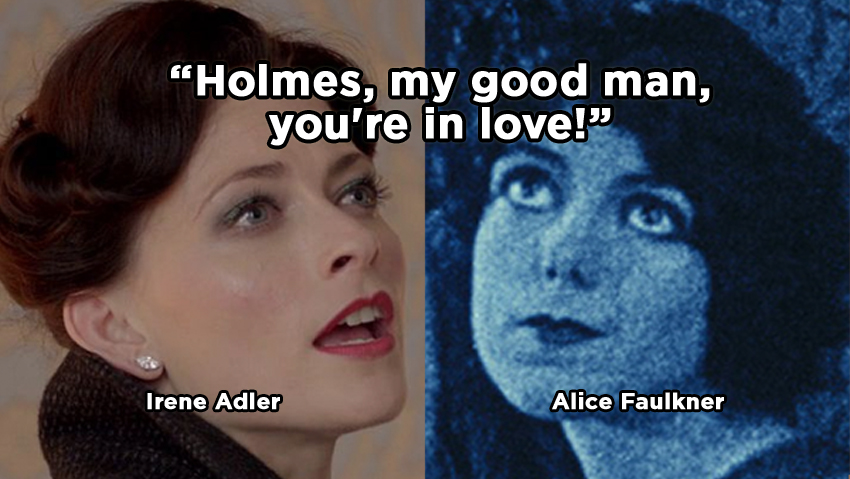In the midst of drafting his 1899 stage adaptation of Sherlock Holmes, William Gillette sent Arthur Conan Doyle the following cable: “May I marry Holmes?”
To which Conan Doyle famously responded, “You may marry him, murder him, or do anything you like to him.”
Anointed with free reign to do as he pleased, Gillette introduced Sherlock Holmes to Alice Faulkner, an original character specifically designed as a love interest for the detective.
Set before Holmes falls to his death in “The Final Problem,” Gillette’s script pulled from several of Conan Doyle’s short stories, including “A Scandal in Bohemia.” Fans may find a striking similarity between Alice and a woman from that tale – The Woman – Irene Adler. Similar to Irene, Alice is in possession of love letters from a nobleman. They are addressed to Alice’s sister who, once the object of the nobleman’s affection, died misled and rejected. Sherlock is charged with retrieving the incriminating letters from Alice, but the young woman is determined to use them to seek revenge for her sister.
Unlike Irene Adler, Alice does not outwit Holmes and disappear with both the papers and a husband. Rather, she cannot bear to see Holmes humiliated as a failure and gives up the papers willingly to spare his reputation.
Most shocking of all, in the end Holmes declares his love for Alice. “Your faculty – of observation is – is somewhat remarkable, Miss Faulkner,” says Holmes, “and your deduction is quite correct! I suppose – indeed I know – that I love you.”
Ultimately the play established William Gillette as the world’s foremost interpreter of Holmes on stage. By the time he starred in the silent film version, Sherlock Holmes (1916), Gillette had played the character over 1,300 times. Newcomer Marjorie Kay played Alice Faulkner to Gillette’s Holmes on the big screen. Although Holmes does not utter those three little words in the filmed version of the play, the same romantic ending is implied. The final scene closes with the pair tenderly embracing. Below are images from the new restoration of this previously long-lost film, featuring the only official love interest sanctioned by Conan Doyle.
As for why Gillette felt the need to introduce romance to the the notoriously aloof detective, he explained his motivation in the “Chats with Players” section of the March 12, 1899 Washington DC Times:
“My greatest difficulty has been in providing the sleuth with a love story. Audiences will not sit through a performance for the mere sake of seeing mysteries unraveled, and at the same time Holmes is not the sort of fellow who would take much stock in women. He might have been eventually won over, but then those who had read the tales would remember that no such thing had happened up to the time of his death, and so this step was impracticable. Finally I put a romance in his past life and resurrected it for the final curtain. People familiar with Dr. Doyle’s work will know that he was killed before the affair was consummated and others will go home happy.”
Putting it more succinctly in a letter to Chicago columnist Vincent Starrett in March 1934, he wrote:
“Of course we know that Sherlock never married anybody. If he did become engaged … it was probably the reason why he went immediately to Switzerland and jumped off the edge of a precipice.”
Click through the slideshow below to view images of Sherlock Holmes and Alice Faulkner’s budding romance in Sherlock Holmes (1916), newly-restored on Blu-ray/DVD from Flicker Alley.


